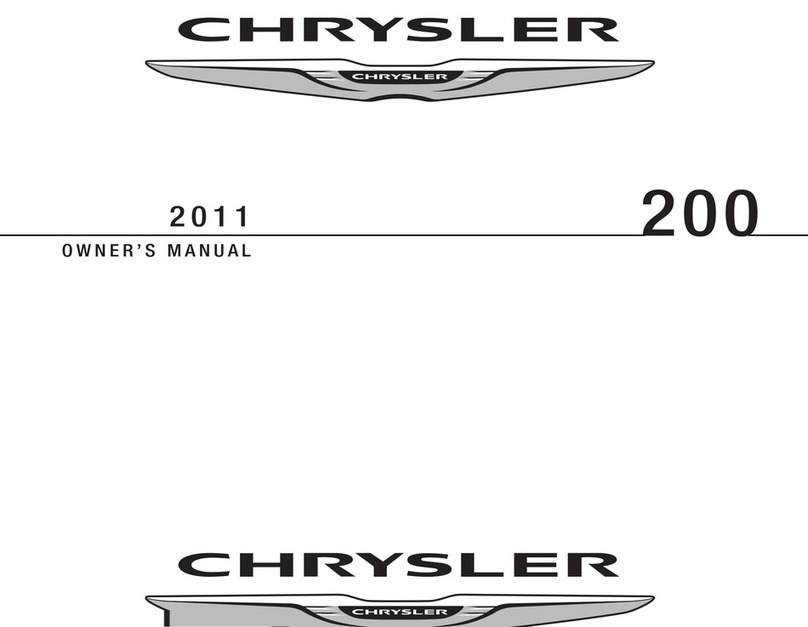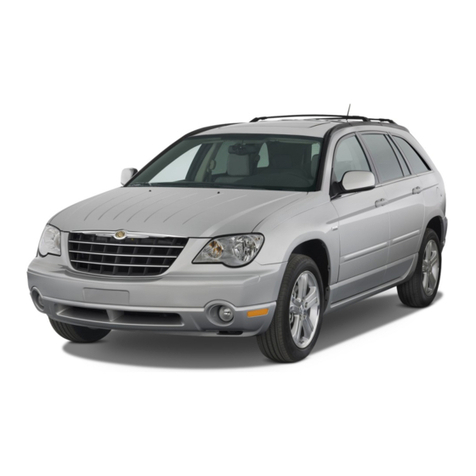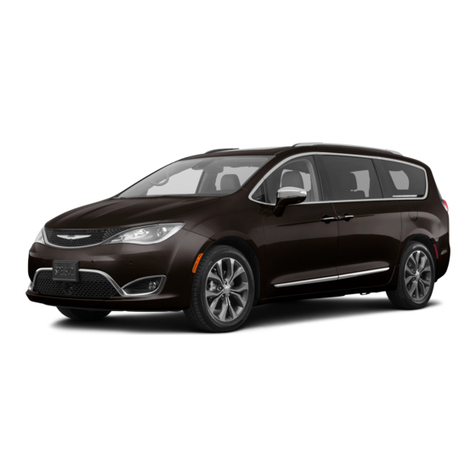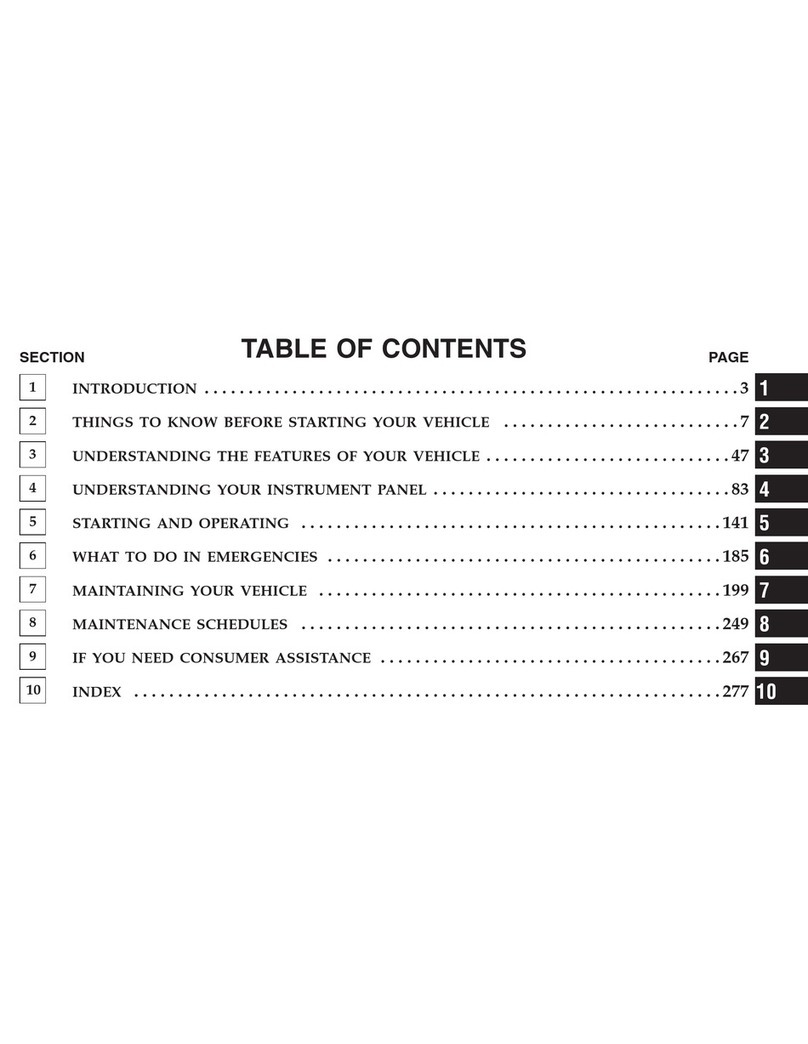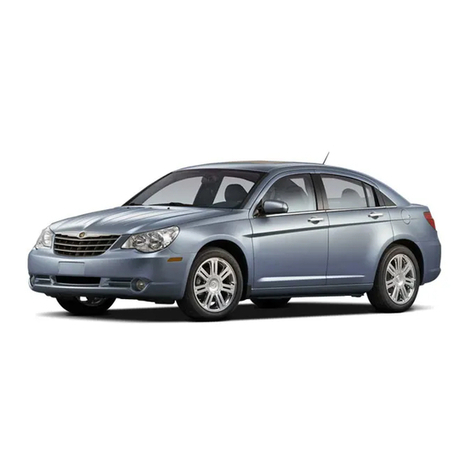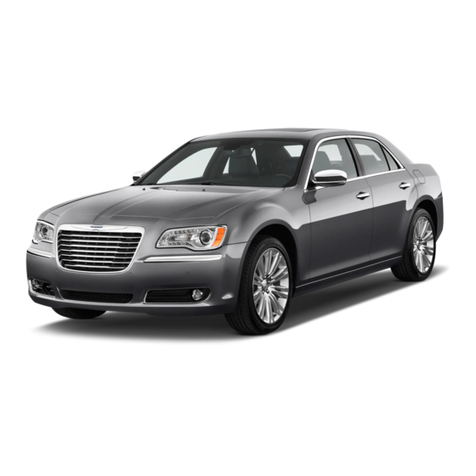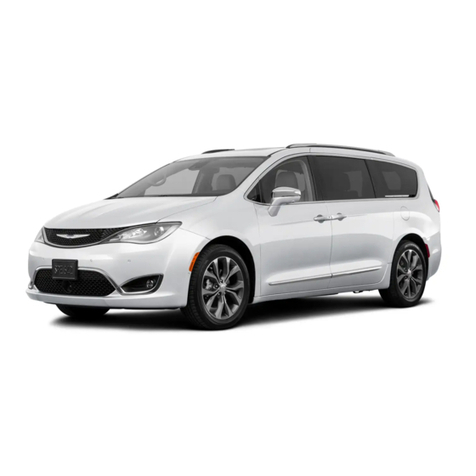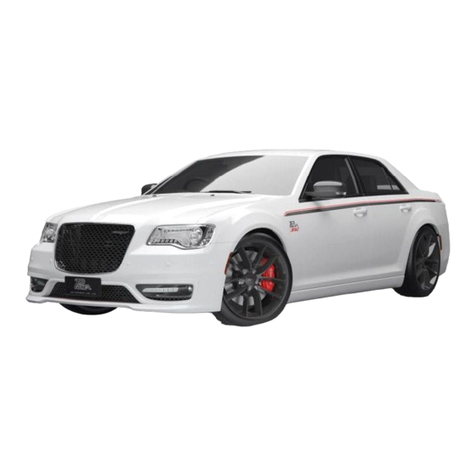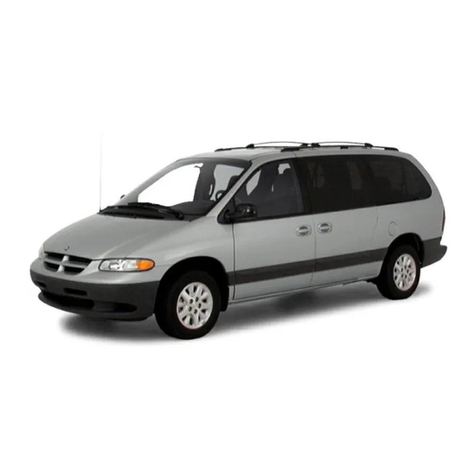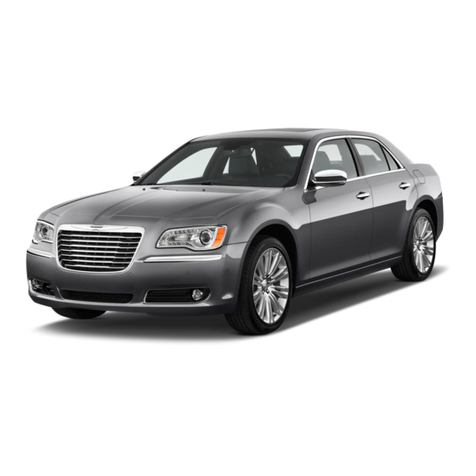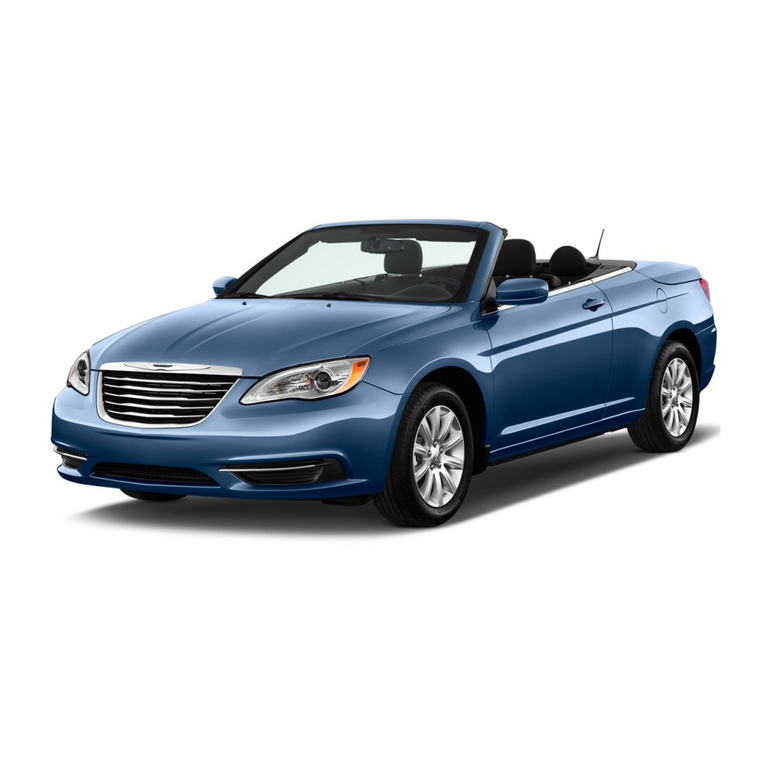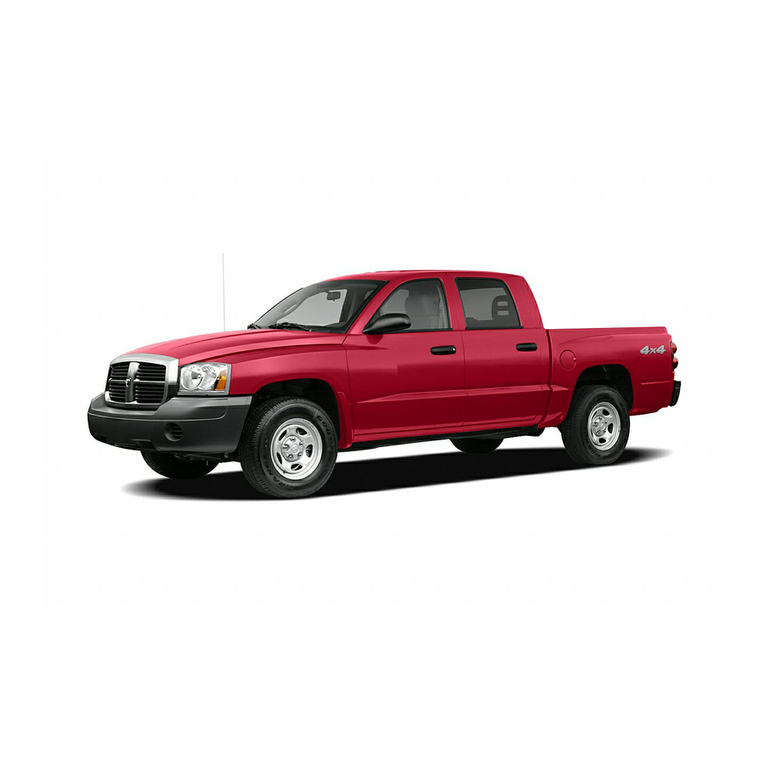
INTRODUCTION/WELCOME
WELCOMEFROMFCAUSLLC .......2
CONTROLS AT A GLANCE
DRIVER COCKPIT ...............4
INSTRUMENT CLUSTER ...........6
GETTING STARTED
KEYFOB ....................8
REMOTE START — IF EQUIPPED ......10
KEYLESS ENTER-N-GO — PASSIVE
ENTRY .....................10
KEYLESS ENTER-N-GO — IGNITION ....12
VEHICLE SECURITY ALARM . . ......14
OCCUPANT RESTRAINT SYSTEMS ....14
HEAD RESTRAINTS .............25
POWERSEATS ................27
HEATEDSEATS ................31
HEATED STEERING WHEEL ........33
TILT/TELESCOPING STEERING
COLUMN ...................34
OPERATING YOUR VEHICLE
ENGINE BREAK-IN
RECOMMENDATIONS ............35
MULTIFUNCTION LEVER ..........36
HEADLIGHT SWITCH ............39
ELECTRONIC RANGE SELECT (ERS) . . . 41
FUEL ECONOMY (ECON) MODE .....42
THREE ZONE AUTOMATIC
TEMPERATURE CONTROLS (ATC) ....43
PARKSENSE REAR PARK ASSIST ......45
PARKVIEW REAR BACK-UP CAMERA . . . 45
BLIND SPOT MONITORING WITH REAR
CROSSPATH .................45
ELECTRONICS
YOUR VEHICLE'S SOUND SYSTEM ....46
CYBERSECURITY ...............48
UCONNECT 130 ................49
UCONNECT 130 WITH SiriusXM SATELLITE
RADIO .....................51
UCONNECT 430/430N ............54
SiriusXM SATELLITE RADIO/TRAVEL
LINK.......................65
STEERING WHEEL AUDIO
CONTROLS ..................69
SETTING THE ANALOG CLOCK .....69
iPod/USB/MP3 CONTROL ..........70
UCONNECT PHONE .............71
UCONNECT VOICE COMMAND .....74
BLUETOOTH STREAMING AUDIO ....76
VIDEO ENTERTAINMENT SYSTEM
(VES) ......................76
ELECTRONIC VEHICLE INFORMATION
CENTER (EVIC) ................78
PROGRAMMABLE FEATURES .......78
UNIVERSAL GARAGE DOOR OPENER
(HomeLink) ..................80
UTILITY
TRAILER TOWING WEIGHTS (MAXIMUM
TRAILER WEIGHT RATINGS) . . . .....83
RECREATIONAL TOWING (BEHIND
MOTORHOME, ETC.) ............83
WHAT TO DO IN EMERGENCIES
ROADSIDE ASSISTANCE ..........84
WARNING AND INDICATOR LIGHTS . . . 84
IF YOUR ENGINE OVERHEATS .......90
TIRESERVICEKIT ...............91
JACKING AND TIRE CHANGING — IF
EQUIPPED ...................97
JUMP-STARTING ..............109
GEAR SELECTOR OVERRIDE .......112
TOWING A DISABLED VEHICLE .....113
FREEING A STUCK VEHICLE . . . . . . . 115
ENHANCED ACCIDENT RESPONSE
SYSTEM (EARS) ...............116
EVENT DATA RECORDER (EDR) . . . . . 116
MAINTAINING YOUR VEHICLE
OPENING THE HOOD ...........117
ENGINE COMPARTMENT — 3.6L . . . . . 118
FLUIDCAPACITIES .............120
FLUIDS, LUBRICANTS, AND GENUINE
PARTS .....................120
MAINTENANCE PROCEDURES ......121
MAINTENANCE SCHEDULE ........121
FUSES .....................126
TIRES — GENERAL INFORMATION ....129
ADDING FUEL ................132
FLEXIBLE FUEL — IF EQUIPPED ......133
REPLACEMENT BULBS ...........133
CONSUMER ASSISTANCE
FCA US LLC CUSTOMER CENTER ....134
FCA CANADA INC. CUSTOMER
CENTER ...................134
ASSISTANCE FOR THE HEARING
IMPAIRED ..................134
PUBLICATIONS ORDERING . .......134
REPORTING SAFETY DEFECTS IN THE
UNITEDSTATES ...............135
MOPAR® ACCESSORIES
AUTHENTIC ACCESSORIES BY
MOPAR ....................136
FREQUENTLY ASKED QUESTIONS
FREQUENTLY ASKED QUESTIONS ....137
INDEX
...................139
TABLE OF CONTENTS


